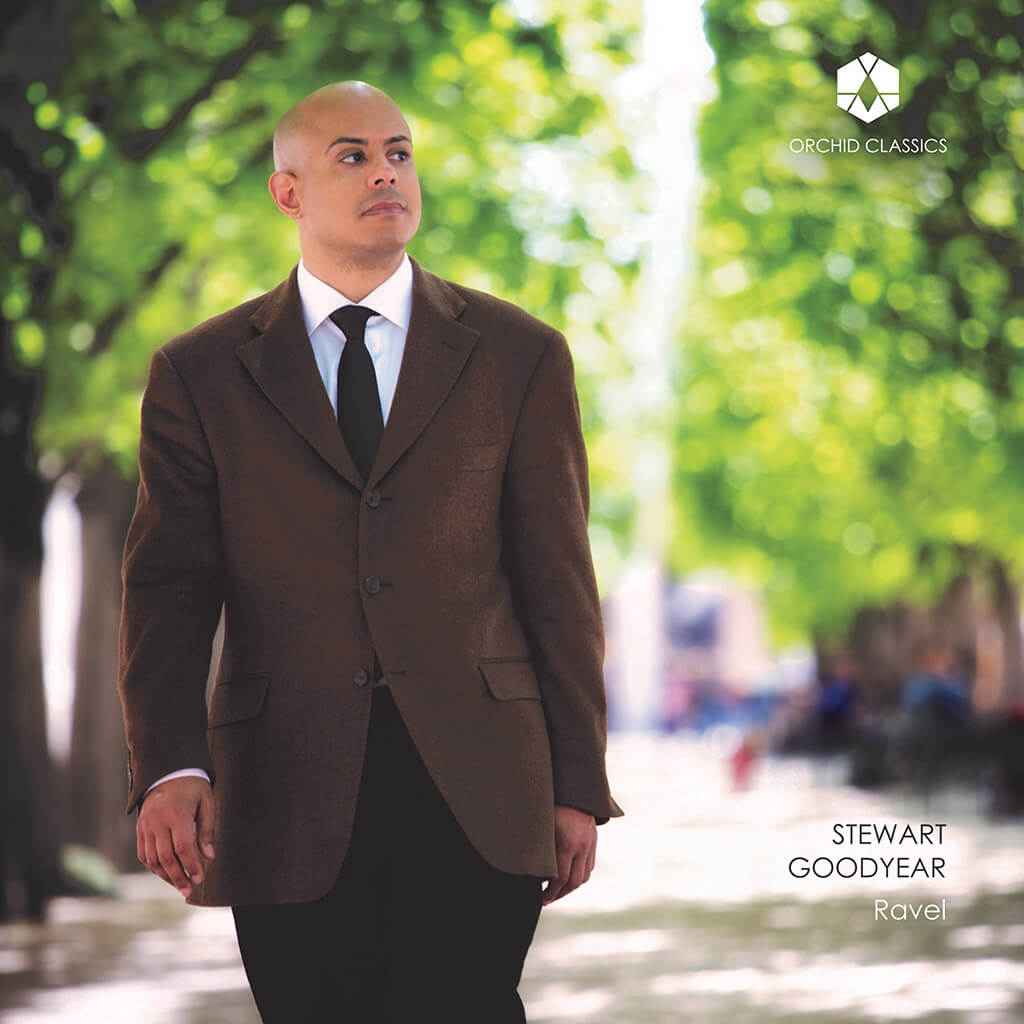
Stewart Goodyear, Ravel. Orchid Classics 20037. 68:32
The end of the year will mark 80 years since the death of French composer Maurice Ravel. Dozens of great pianists have recorded his remarkably evocative music as each new generation is seduced by it, discovers how difficult it is to play, and then takes on the challenge of bringing it to life. Canadian Angela Hewitt made Ravel one of her specialties a couple of decades ago. Now Stewart Goodyear is ready to prove that he deserves our attention as well.
In his first recording for the London, England-based label Orchid Classics, Goodyear lays out the substantive core of Ravel’s output for solo piano: The suites Mirroirs (composed in 1904-05) and Gaspard de la nuit (1908), as well as the three-moevement Sonatine (which dates from more or less the same period as Mirroirs), bookended by Jeux d’eau (from 1901) and Pavane pour une infante défunte (written in 1899, while he was still a student at the Paris Conservatoire).
Goodyear does a brilliant job from beginning to end of this more than hour-long album. There is much to admire here, beginning with Goodyear’s remarkable technique. It seems there is nothing his fingers can’t do effortlessly — and Ravel does his best to throw every conceivable challenge the pianist’s way. But that is only the first impression.
Further listening demonstrates the depth of Goodyear’s understanding of the music. Vlado Perlemuter, a Lithuanian-born pianist who settled in Paris and became one of the recognized authorities on interpreting Ravel in the 20th century, would repeat over and over again that one had to immerse oneself in the text in order to find its truth; the best interpretation was not to be found in the performer’s imagination. At no time does Goodyear appear to have anything but Ravel’s intentions in his sights, and in his hands.
It is as if Goodyear were channelling Ravel himself (Ravel the composer, not the pianist).
Some pieces, like Le gibet in Gaspard de la nuit and Une barque sur l’océan in Mirroirs, are all about evoking atmosphere. Goodyear dutifully bathes us in rich sonorities. Other pieces, like the other two parts of Gaspard and Alborada del gracioso in Mirroirs, for example, give rise to punctilious rhythms and fast-moving cascades of notes. Goodyear steps up with lightining strikes of intensely focused sound.
The pianist never indulges in sentiment, which was not Ravel’s focus. Ravel wanted to depict images and words in music first and foremost, not tug at our heartstrings. The music is always moving forward, no matter how slow the tempo. And the phrasing and layering of musical ideas is impeccably laid out, plotted with surgical precision.
If I have one misgiving about this recording, it is the overly crystalline clarity and percussive sound of the piano Goodyear chose to use — or perhaps the slightly dry sound is due to decisions made by his recording engineer. But no matter, there is a lot to enjoy here, from the initial intake of breath at Goodyear’s technical facility, to the lingering smile at the subtlety of his interpretive approach.
For more RECORD KEEPING, see HERE.
#LUDWIGVAN
- Classical Music 101: What Does A Conductor Do? - June 17, 2019
- Classical Music 101 | What Does Period Instrument Mean? - May 6, 2019
- CLASSICAL MUSIC 101 | What Does It Mean To Be In Tune? - April 23, 2019



